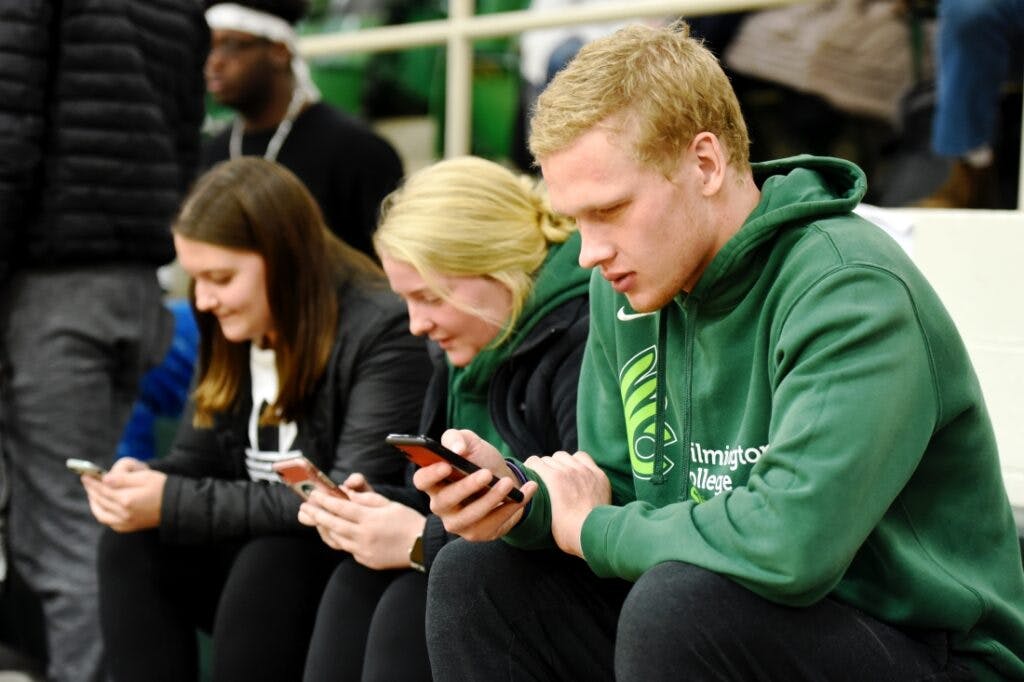Some Students Describe Smartphone Use as 'Safety Net'
A class of Wilmington College students learned how the nation’s obsession with smartphones and digital media is, in some measure, preventing them from living their lives both in person and in the present.
PICTURED: From the left, WC students Shelbi Mays, Ashley Boone and Jared Shoemaker are all busy on their smartphones during a basketball game.
A culminating project in Dr. Audrey Wagstaff’s Mass Media in a Global Society course involved a 24-hour media exclusion exercise in which her students refrained from digital media use for a full day: no iPhones, Google Pixel 3XL or Samsung Galaxy, no Internet, social media, video games or anything else associated with a smartphone.
Wagstaff, associate professor of social science, said her students were instructed to keep a journal, recording how they felt being estranged from their devices. She noted that students emerged from that experience with a more realistic view of how media use can consume time, distract them from face-to-face interaction, alter their sense of reality and, in essence, manipulate their lives.
“I found that, while some found this (exercise) to be more uncomfortable than getting a root canal, many emerged from the experience not only unscathed but also committed to taking the time to disconnect from their devices and reconnect with others — even themselves — in meaningful, deliberate, fully present communication,” she said.
Wagstaff cited a student who underwent the media cleanse over Thanksgiving break and stopped by his grandmother’s home.
“I had the pleasure of having a media distraction-free meeting with my grandma,” the student said. “It was nice to live in the moment and actually be invested in my time with her rather than worrying about my phone. “(Our textbook) talks so much about how families need to have less screen time and more face-to-face time together — and I couldn’t agree more.”
Wagstaff noted that some family members assisted students in successfully completing the project, while others presented barriers.
“Several students mentioned becoming more aware of their family and friends’ dependence upon their devices while others were frustrated with the hypocrisy of the situation,” she added, “family members praising the project while they ‘sat’ on their own devices and justified giving children devices (as babysitters).”
A student noted the “interesting paradox in our society in which many people want change but do not want to change themselves, further propelling our dependence on media.”
Several students expressed the “relief” they felt after 24 hours of being “unplugged,” while describing the anxiety they manifested in believing they were “missing out on something.” Indeed, several students described their phones as a “safety net” and a “safe place to go to feel included.”
Another student felt liberated and validated by the experience.
“I was able to do so much more homework without the distraction of multitasking,” she said, noting that, even before this exercise, she regularly keeps her phone stowed away while in class. “This project confirmed that I am doing the right thing.”
One student took a unique approach to recording a journal of the experience.
She expressed her reaction to the project in letters written to her mobile phone. In one letter, she wrote, “I think we needed this break to realize what we mean to each other. I was your slave, not your companion. You’re supposed to help me and support me. This relationship is toxic. I’m glad I got to do this project. I never had a good excuse to stop using you until now. Things are going to change!
“It’s not me; it’s you.”
